Azerbaijan contemporary fine art of the end of II and beginning of III millennium
Azerbaijan is the country of ancient culture. Heretofore, lots of Azerbaijani artists in their creative work get the inspiration from ethnogenetic memory, appealing to "primitive" and mysterious art of pristine creators that was reflected in rock drawings of Gobustan (area not far from Baku), which is in its turn historically can be traced back to the Mesolithic epoch. Mysterious megalithic art of Gobustan along with ancient stone plasticity and samples of archaic primeval and Zoroastrian architecture remained by a miracle, are inexhaustible energetic source for all Azerbaijani art. Azerbaijani art right up to time of joining of the Azerbaijan to Russia (XVIII c.) was developing similar to visual culture of most Muslim regions, in steady format of decorative art: carpet weaving, miniature and different branches of folk crafts. I think I am not mistaken if I would say that primeval art of Gobustan, carpet art and miniature painting (its blossom fell at XVI c.) in the aggregate appeared to be mighty cross-linking energetic basis on which Azerbaijani visual art of XX century has formed.
The history of "radical" art shows how a neo-liberal order undergoing globalization uses a well-oiled mechanism of its own devices to reproduce itself. While this mechanism allows the artist to construct a critical discourse, he actually stands no chance of ever actualizing it. The system injects itself with a critical barb, but its tissue immediately assimilates any destructive potential this insertion might have. After the system has completed this filigree work of recovery, counterpower loses the grandeur of its rage – its radical, destructive impulse – and turns into a plaything, performing the decorative role of a domesticated antithesis in a profane "systemic" game.
As to the historical nature of this theme, then the tradition of shadow images can trace its beginnings to very ancient, primeval times. One can easily imagine how our distant ancestors, living in a cave, would immerse themselves in a meditative state, beholding the play of shadows on the underground stone vaults, indeed the sole source of light would be the fire lit in the cave. The shadows cast by the people and items were bound to fascinate and stir the soul of primitive man – the dynamic tongues of flame would turn these shadows into vibrant silhouette images. Due to the space of the cave being immersed in semi-darkness, the aura created by the appearance of a shadow image was permeated by a mysteriousness that released the imagination and fully corresponded to their trance-like view of life.
We are at the beginning of the third millennium for the Azerbaijani capital Baku, a period that will be remembered for a constructional boom of an unprecedented scale. Of course, throughout its history, the city has been renewed, rebuilt, enlarged. New housing estates, neighbourhoods, parks, cultural and social facilities have appeared. But the developments happening now are both qualitatively and quantitatively different. We are witnesses to a fundamental rebirth of the city, its transition in to another ‘architectural dimension.’ This is a real cultural and town–planning revolution.
Orkhan Huseynov’s Atelier Sovetsky is an eight-channel video installation dedicated to the theme of the Baku street known as ‘Sovetskaya’ (meaning Soviet Street). In Soviet times, almost every town in the USSR had a street with this name. Sovetskaya Street in Baku, the capital of Azerbaijan, was not just an ordinary street like any other - it possessed a unique subculture. In other words, this district was a separate, and in many ways self-sufficient world, with its own rituals, ideas and laws shaping the everyday lives of its residents. Why did the artist conceive this project? Because this street, according to the dynamics of the construction boom and the architectural master plan for the city, is now undergoing a radical transformation – or, to put it plainly, demolition.
Experimental films, music and respect for the audience
Contemporary World Cinema is more multifaceted than ever. Incorporating innovative techniques and approaches from related areas of screen culture expanded the scope of contemporary cinema in terms of understanding film language. Just 30-40 years ago the “big cinematography” had a recognizable format and syntax as well as traditional attitude to the narrative structure of the film as a visual analogue of a literary work. And the film as well as theatrical play or literary work has ascended to a high dramatic scheme, which was based on the “Poetics” of Aristotle. This factor has united most of the films produced in different countries and on different continents. Only little groups of people were aware about the existence of cinema avant-garde and experimental cinema, which in it is predominance for the non-linearity and radicalism in the area of the movie language opposed itself to a big film industry. These followers either were engaged in that type of movie making themselves or were close to the artistic societies who produced these type of films.
Look, the painter has painted a curved spoon, a broken cup, a broken pot, spoiled audio cassette, a power point come off the wall and electric point. I feel like to say “These are all worthless parts of our life. It is the reflection of the decline of the humanity, the manifestation of the global depression, the time which the society is rolling down the bottom of the hell”. But not at all, not the same as we think! The painter just has described a curved spoon, a broken cup, a broken pot, spoiled audio cassette, a power point come off the wall and electric point. It is no need to search the things that are not or have not been intended to be in the pictures. Farid Rasulov is a concrete artist...
Azeri Contemporary Art collection for Benetton
The present-day globe comprises numerous paradoxes. On the one hand, although the economic slowdown persists, we still observe the inexorable course of accelerated globalization and the flawless victory of “mediacracy through the social networks that envelop our universe, attesting to a catchphrase coined by Marshall McLuhan: “the world is a global village.”These processes reveal a tendency toward cultural unification and a global aspiration for integrity, unity and transparency. On the other hand, the increscent atomization of human life – where every national civilization longs for individualization and for every person to showcase his or her personal virtues, as well as permanent self actualization – cannot be denied.
Atomic Multitude in Concrete Bаrracoon
The human being is just a multidimensional and polyphonic creature. His affiliation to biological species is simply the visible part of his complex anthropological project. The core essence of Homo sapiens is concealed by the secrecy of his conscience and cogitation and enclosed by his inclination to challenge of the Infinitude. To perceive his biological applicability, he stands in urgent need for connection with the nature and through the nature with the Space, etc.
In the ill fated year of 1991, by means of a series of hectic and diverse, bureaucratic procedures, a huge geopolitical and geo-cultural crime was committed – the break up of the USSR. One of the most powerful and enigmatic spaces of modern times, was split up into small "feudal princedoms" calling themselves independent states. It was broken up before the eyes of millions of everyday Soviet people who had been exhausted by the deceitful liberal democratic rhetoric of Gorbachev's manifold reformers.
'Myth' can be used in two meanings: myth as a way of speaking, inherent in the most ancient, primeval periods of human history – in which case, as a rule, it is about the mythologies of the peoples of the world – and myth as something invented, unreal or artificial. In this text we will use the word in its second meaning, but with one stipulation: myth does not relate to the natural world, it is extra-biological as well as extra-social. It belongs to the sphere of secrecy, to the unknown, existing in those 'muscular' substances of existence, where the undecipherable scalpel of human intellect does not reach. As such, all ancient rituals connected with this level had the character of initiation and of a relation to higher beings
Pavillion of Republic of Azerbaijan
The idea of the pavilion found its expression in Descartes’ famous words “Cogito ergo sum” and to blend the art of the chosen artists with the context of contemporary art is actually tearing the substance of the latter and compromising a specific regime of actuality, the presence or absence of which in art objects defines its affiliation or not with contemporary art. Let’s say in advance that the artists presented in Azerbaijan’s pavilion are, with some proviso, close to a psycho-type of non-actual artists, the same psycho-type which many contemporary art analysts consider to become the dominating psycho-type in the current millennium.
If we trace the history of art from the Renaissance era up to the present we will observe that it was evolving towards a higher level of democracy. Before the Renaissance all forms of art except for the decorative crafts were part of religious rituals or attributed to temples. During the Renaissance art became more independent but still didn’t out step the boundaries of the authorities’ possession. Only after the French Revolution when angry crowds of plebian people made their way into Louvre and other private collections that were later turned into museums, the art became generally accessible. The era of further democratization of art began.
The greatest challenge is to see
If we asked ourselves what media technology is the most popular and widespread nowdays, I think the answer would be unequivocal – photography. It is difficult to find a more accessible and popular form of visual expression than the photograph. In terms of media practices, our period is likely to go down in visual art history as the century of popular photography.
Art Project "Mourning for Art" - Babi Badalov
For works of modern art, not only are the conditions by which the art is borne important but also the place where it is exhibited. The latter is of even greater importance, as interactivity, contact with the viewer and the possibility of producing a spontaneous, creative gesture while also receiving a sentient response are the most basic conditions of existence for the modern artist.
Azart. First International post contemporary art exhibition
Contemporary artists are audacious people, dangerous for the consumptive society of today's informational age, which praises comfort and dull prosperity. Azart has become an almost criminal word, associated first of all with gambling and extreme pastimes (cards, roulette, the breaking of public order...). In previous lives, contemporary artists would have been pirates, adventurers, highwaymen, revolutionaries and other troublemakers, disdaining the replete and dull life of bourgeois dolts.
Escape into Oneself from the Bustle of the World
I believe that the artist should work the way they feel and deem appropriate. No limits should be put and no rules should be dictated to the creative individual. Artistic freedom comes before everything. There are quite a lot of people in Azerbaijan who carry on traditions of the national art school. There are also many artists who build on the discoveries of the West-European avant-garde and using the methodologies of postmodernism. And it would be not quite correct to say that one approach in creativity is better or worse than another. Despite the fact that one of the largest international forums on modern art, the Venice Biennale, features national pavilions up to now, modern art basically knows no such problem as "national ghetto"…
The dynamics of ever-increasing complexity is the most characteristic feature of modernity. Complexity, in turn, presupposes ambiguity, a multitude of degrees and layers, and the parallelism of dimensions and worlds. Humankind arrived in the twentieth century with the appreciation of the need to recognise the sustainability of not one but several ‘pictures of the world’. In modern art, complexity is manifested in everything, but primarily in formal approaches and the technological know-how that change not only visual forms but also the very conditions of the perception of the works of art and their presentation in public places.
Art-project in progress: "Emanation of Non-actual"
Dear Colleague! I am glad and grateful so much that you've found time to open this envelope to be acquainted with its contents. The aim of this latter - to invite you to discuss some principle points. I am inviting you to open dialogue with regard to what we are dealing with, where we are going to, and why we need doing what we do in art sphere. I understand that you are very busy, but trust me, some things are worth being paid attention to.
Let's start from the last question and work our way up. I don't think that there is necessarily a conflict between these things. Actually, I think my scientific nature aids me in some ways. I like to think of the word ''artist', as a description conquering a variety of fields, as meaning doctor, artist, philosopher, and politician. During the Middle Ages, there was this wonderful idea about the ' universal artist', who had various abilities. Looking back, we are impressed with their diversity… this is what every artistic man must strive towards.
It is philosophical subject of interaction between oneness and multitude. We are living on one earth which, at the same time, cruelly separated (by people themselves) on so many sectors. Diversity of the world is undoubtedly the positive factor. But so called globalization, taking place at present, unfortunately, methodically destroying the national peculiarities, that on the one hand help all nations to integrate into world community, but on the other hand isolates them from their own national rotes. I think we have to go on the integrative processes into world community, but keeping our ancient traditions alive.
The main goal of this research is analysis of the entire context of modern art and in particular of postmodernism. This research is based on analysis of patterns that characterize modern art. The thesis of the dissertation is following: the postmodernism phase of culture is the main stage of "modern times" and the culmination of crisis is situation of art. According to its own logic it develops itself up to its capacity and then destroys itself and by that leaves empty space for Traditional culture.





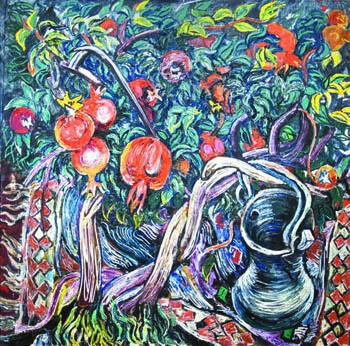
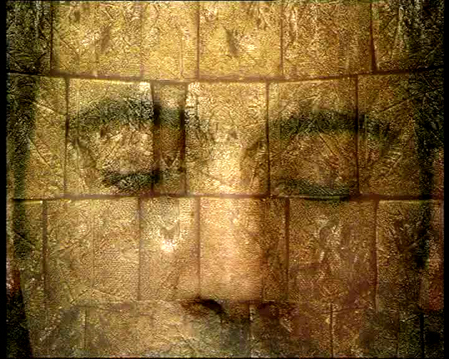
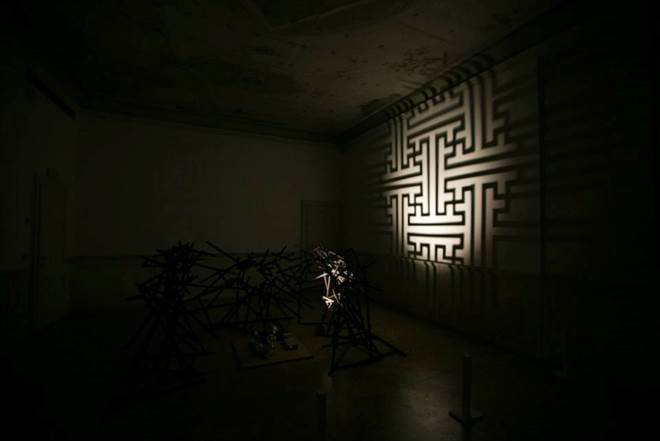
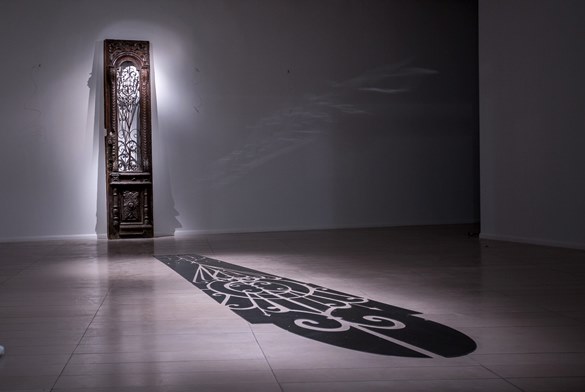
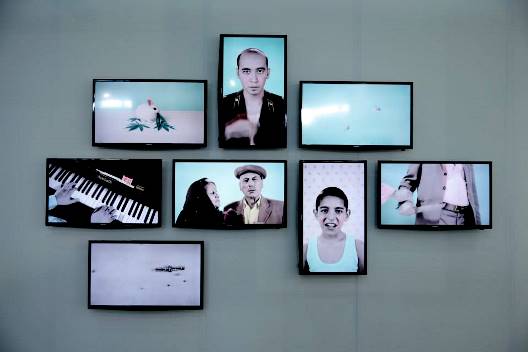
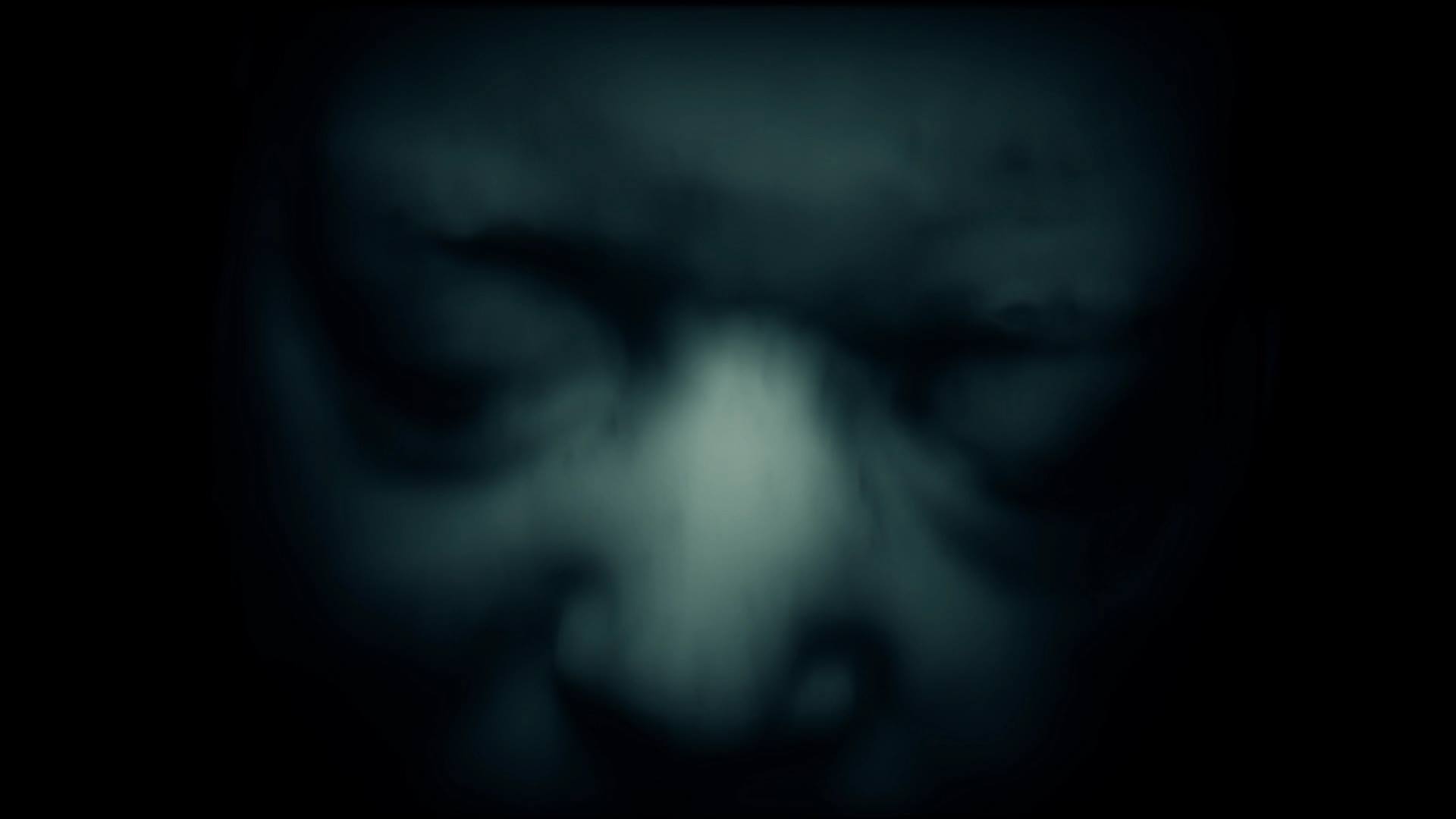



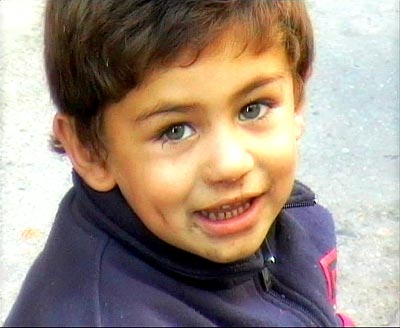
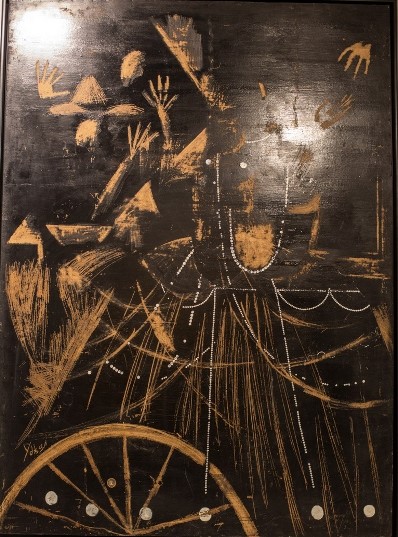

(1).jpg)
.jpg)
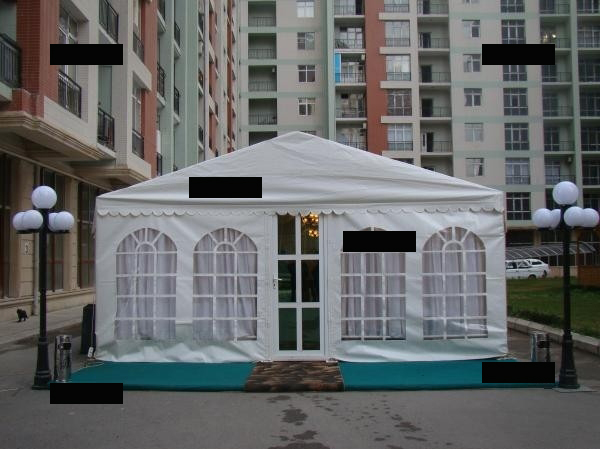
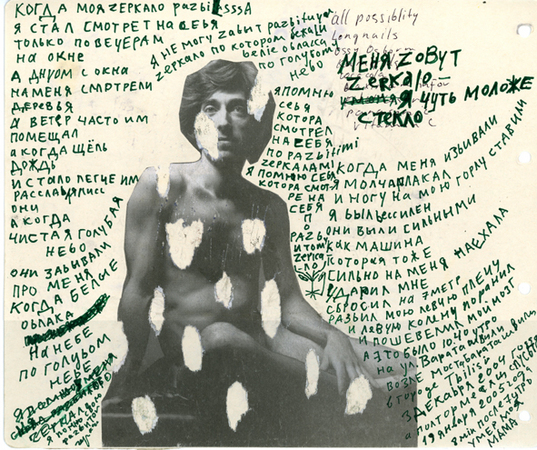
.jpg)
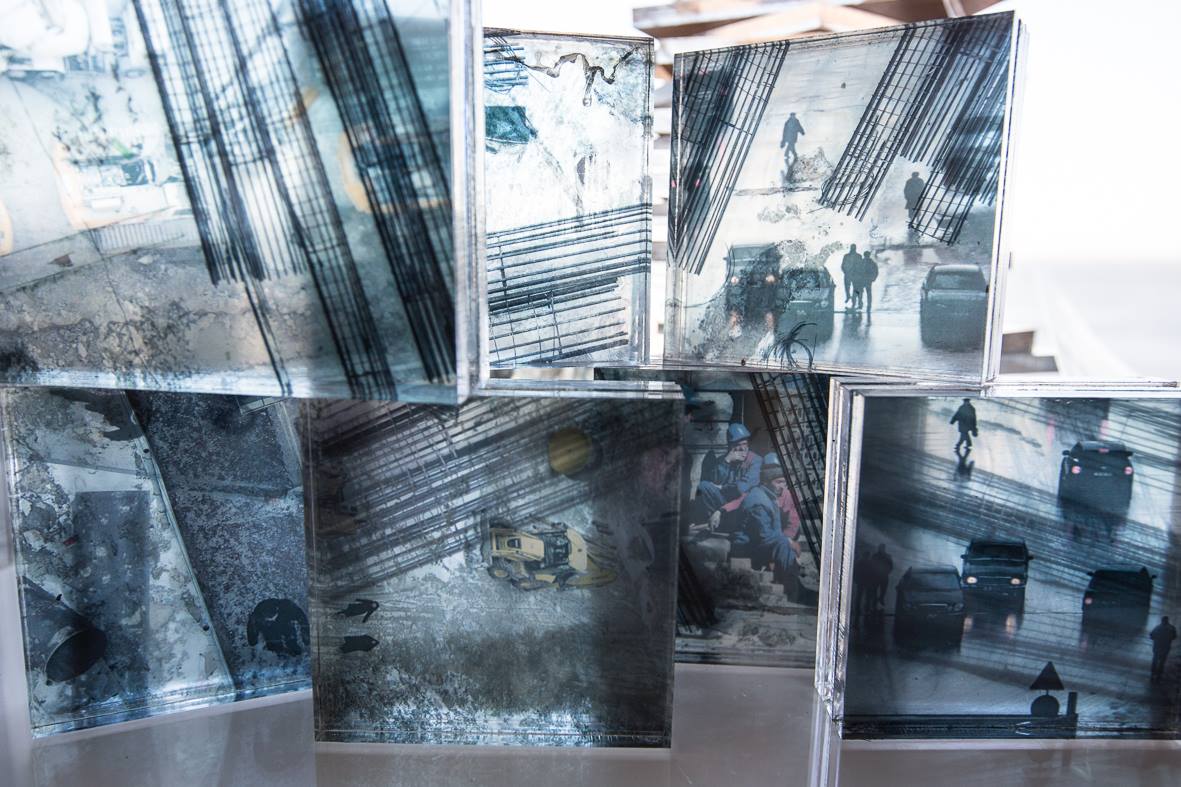
.jpg)
.jpg)
.jpg)
.jpg)





